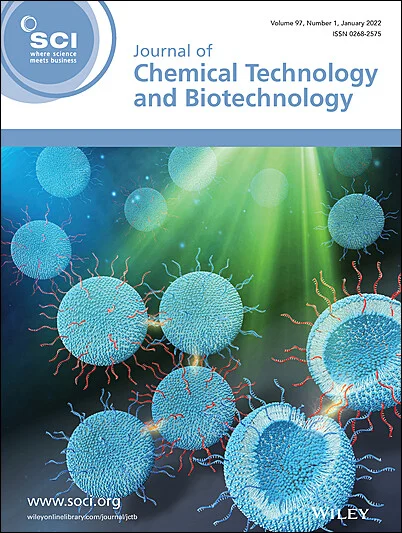Understanding the conversion of nitrogen compounds during ammonia electrooxidation: effect of current density, chloride concentration and pH on nitrate formation
Abstract
BACKGROUND
Ammonia removal from wastewater by electrooxidation (EO) is an interesting approach because of its efficiency and easy maintenance and operation. In this process, ammonia is oxidized to nitrate or nitrogen gas. Ammonia conversion to the latter is desirable to remove nitrogen from the liquid; however, the influence of several operating parameters on nitrate generation has not been systematically evaluated. Therefore, this work aimed to investigate the effect of current density (200–800 A m−2), chloride concentration (0–10 000 mg L) and initial pH (5–9) on the electrooxidation of an ammonia-containing solution and the associated generation of nitrate. For this purpose, a laboratory-scale electrochemical reactor containing two Ti/RuO2 electrodes was used.
RESULTS
The results indicated high ammonia removal efficiency – 98% within 150 min at 800 A m−2 and 97% within 240 min at 500 A m−2 – generating around 70 and 102 mg -N L−1 under these conditions, respectively. Increasing the chloride concentration from 5000 to 7500 mg L−1 reduces the electrolysis time needed to remove all ammonia from 180 to 150 min. However, with increasing initial chloride concentration, the amount of nitrate generated rose from 69.5 to 135.9 mg N L−1. On the other hand, in the test without chloride, nitrate generation was considerably lower (0–0.61 mg L−1).
CONCLUSION
The higher the current density applied, the greater the ammonia removal by EO. Although current density influenced the ammonia oxidation rates, it did not directly affect nitrate formation. The lower the concentration of ammonia in the solution, the more significant was the fraction of nitrate generated. Most of the inlet ammonia was oxidized to nitrogen gas, nitrite was rapidly oxidized to nitrate and higher chloride concentrations enhanced ammonia oxidation. © 2024 Society of Chemical Industry (SCI).

 求助内容:
求助内容: 应助结果提醒方式:
应助结果提醒方式:


